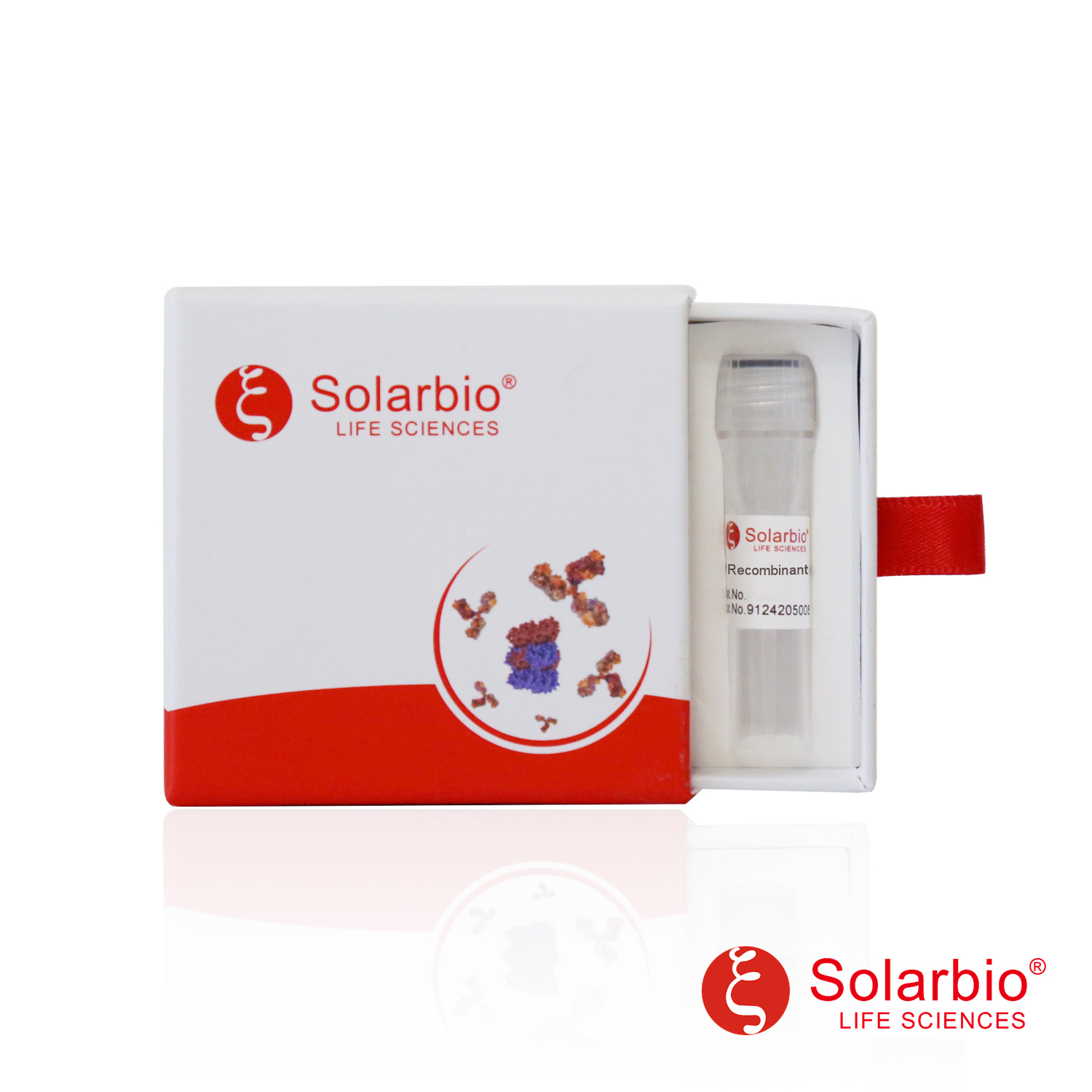| Gene Name |
NFKB1 |
| Synonyms |
CVID12;EBP-1;KBF1;NF-kB1;NF-kappa-B;NF-kappaB;NFKB-p105;NFKB-p50;NFkappaB;p105;p50 |
| English Name |
Recombinant human NFKB1 protein |
| Full Name |
nuclear factor of kappa light polypeptide gene enhancer in B-cells 1 |
| Chinese Name |
B细胞中κ轻型多肽基因增强子的核因子1 |
| Appearance |
Powder: Lyophilized from a 0.2 μm filtered solution of 2-8M Urea, 20mM Tris-HCl, 150mM NaCl, 1mM DTT, PH7.2-8.0. |
| Purity |
≥85% by SDS-PAGE. |
| Storage |
Reconstituted protein solution can be stored at 4-7℃ for 1-2 weeks, stored at < -20℃ for 1 year. |
| Transport Condition |
The product is shipped at -20℃ temperature. Upon receipt, store it immediately at the temperature listed below. |
| Concentration |
1mg/ml by SDS-PAGE. |
| Swiss Prot |
P19838 |
| Gene ID |
4790 |
| Reactivity |
Human Mouse Rat (Chicken Dog) |
| Molecular Weight |
38.1kDa |
| Interval Range |
150-500aa |
| Background |
NF-kappa-B is a pleiotropic transcription factor present in almost all cell types and is the endpoint of a series of signal transduction events that are initiated by a vast array of stimuli related to many biological processes such as inflammation, immunity, differentiation, cell growth, tumorigenesis and apoptosis. NF-kappa-B is a homo- or heterodimeric complex formed by the Rel-like domain-containing proteins RELA/p65, RELB, NFKB1/p105, NFKB1/p50, REL and NFKB2/p52 and the heterodimeric p65-p50 complex appears to be most abundant one. The dimers bind at kappa-B sites in the DNA of their target genes and the individual dimers have distinct preferences for different kappa-B sites that they can bind with distinguishable affinity and specificity. Different dimer combinations act as transcriptional activators or repressors, respectively. NF-kappa-B is controlled by various mechanisms of post-translational modification and subcellular compartmentalization as well as by interactions with other cofactors or corepressors. NF-kappa-B complexes are held in the cytoplasm in an inactive state complexed with members of the NF-kappa-B inhibitor (I-kappa-B) family. In a conventional activation pathway, I-kappa-B is phosphorylated by I-kappa-B kinases (IKKs) in response to different activators, subsequently degraded thus liberating the active NF-kappa-B complex which translocates to the nucleus. NF-kappa-B heterodimeric p65-p50 and RelB-p50 complexes are transcriptional activators. The NF-kappa-B p50-p50 homodimer is a transcriptional repressor, but can act as a transcriptional activator when associated with BCL3. NFKB1 appears to have dual functions such as cytoplasmic retention of attached NF-kappa-B proteins by p105 and generation of p50 by a cotranslational processing. The proteasome-mediated process ensures the production of both p50 and p105 and preserves their independent function, although processing of NFKB1/p105 also appears to occur post-translationally. p50 binds to the kappa-B consensus sequence 5'-GGRNNYYCC-3', located in the enhancer region of genes involved in immune response and acute phase reactions. In a complex with MAP3K8, NFKB1/p105 represses MAP3K8-induced MAPK signaling; active MAP3K8 is released by proteasome-dependent degradation of NFKB1/p105. |
| Application |
Immunology research |
| Source |
E.coli |
| Purification Method |
NI-NTA affinity purification |
| Solvent |
Reconstituted protein solution can be diluted with distilled water. Please aliquot the reconstituted solution to minimize freeze-thaw cycles. (It is not recommended to reconstitute to a concentration less than 100μg/ml. Dissolve the lyophilized protein in distilled water.) |
| Endotoxin |
Not measured |
| Biological Activity |
N0 |
| Lable Information |
With a 6×His tag at the N/C-terminus. |
| Unit |
Piece |
| Specification |
10ug 50ug 100ug 1mg |


 English
English
 中文
中文

 Manual Download
Manual Download

